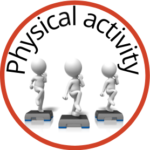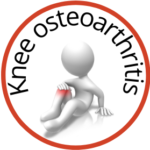Welcome to SUMIT, otherwise known as SUpported Motivational InTervention for people with knee osteoarthritis to increase physical activity.
This website has been created as part of our SUMIT trial to provide more knowledge and support to help you increase your physical activity and maintain control of your knee pain symptoms. The website has been created by our research team at La Trobe University as part of Milly Bell’s PhD.
Please explore the toggles along the top to find out more about physical activity, knee osteoarthritis, goal setting, what the research is saying and to read patient success stories of the benefits physical activity has brought to other people with knee osteoarthritis!
![]() This information portal has been developed with input from patients and researchers from La Trobe University’s Sport and Exercise Medicine Research Centre
This information portal has been developed with input from patients and researchers from La Trobe University’s Sport and Exercise Medicine Research Centre
The information is not intended to replace consultation with a physiotherapist or doctor. However, you may find that following the information helps you to reduce or stop your pain, or at least help you to manage it better.

-

Milly Bell
Physiotherapist and PhD candidate studying physical activity in osteoarthritis. Passionate about keeping people active.
Key positions: Milly is currently PhD Candidate at La Trobe Sport and Exercise Medicine Research Centre.
Social media: Twitter – @millybelly4
-

Dr Marcella Pazzinatto
Physiotherapist, PhD, expert in persistent knee conditions.
Key positions: Marcella is currently Clinical Trial Coordinator of two projects at La Trobe Sport and Exercise Medicine Research Centre.
Social media: Twitter – @M_Pazzinatto
-

Dr Christian Barton
Founder of TREK group and passionate about knowledge translation to healthcare professionals and patients
Key positions: Clinical Director and Physiotherapist at Complete Sports Care and Senior Research Fellow at La Trobe Sport and Exercise Medicine Research Centre
Social media: Twitter – @DrChrisBarton
STATEMENT OF INTENT
These resources are not intended to serve as a prescribed standard of medical care. Standards of care are determined on the basis of all clinical data available for an individual patient and are subject to change as scientific knowledge and technology advance and patterns of care evolve. These resources have been developed to inform practice and should be considered guidance only. Following advice on this site will not ensure a successful outcome in every patient, nor should it be construed as including all proper methods of care or excluding other acceptable methods of care aimed at the same results. The ultimate judgment regarding a particular clinical procedure or treatment plan must be made by the clinician, based on clinician experience, expertise and in light of the clinical presentation of the patient, the available evidence, available diagnostic and treatment options, and the patient’s values, expectations, and preferences.





